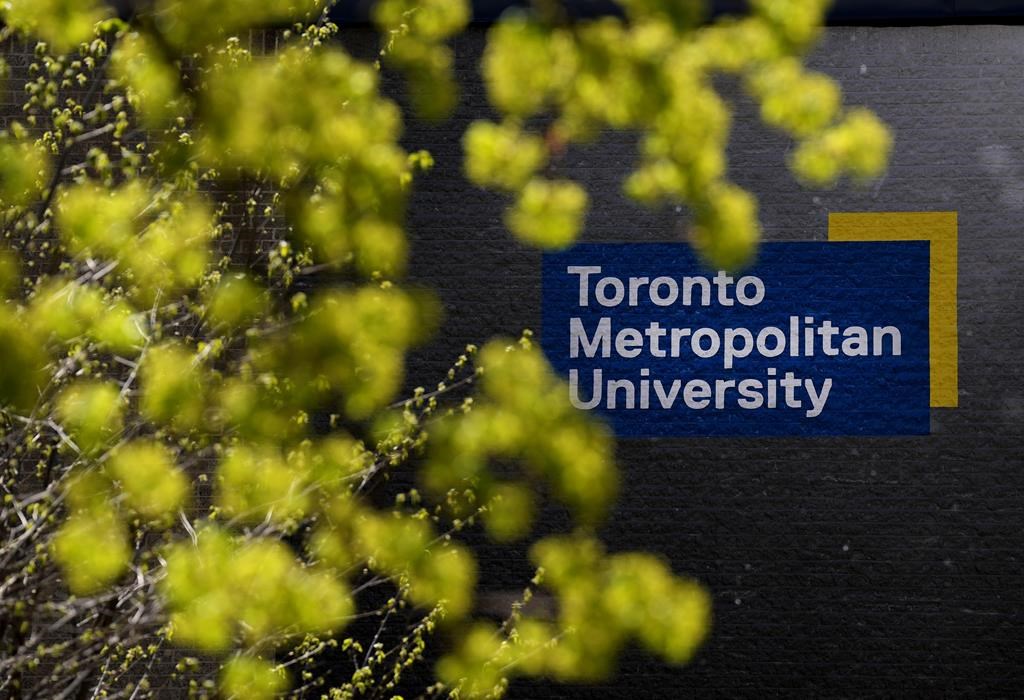City Swelters Under Heat Wave
Posted May 31, 2006 12:00 pm.
This article is more than 5 years old.
While many await the coming of summer with bated breath, others simply can’t breathe when a thick blanket of smog covers the city.
That was the case for more than a few Torontonians after the first heat and smog days of the early season.
And the scorching temperatures continued Wednesday with the mercury rising above 30 degrees Celsius for the third straight day.
Toronto’s Medical Officer of Health upgraded Tuesday’s Heat Alert to an Extreme Heat Alert for Wednesday, opening up cooling centres to help those without air conditioning.
“We upgraded the Heat Alert to an Extreme Heat Alert because the conditions are likely to get worse in that there’s a greater possibility that we’re going to see increased number of deaths under these conditions,” explains Marco Vittiglio of Toronto Public Health.
Cynthia Francis finds the heat intolerable.
“You can’t sleep. You are not doing things like you want to do. You wait just to go to work,” she said.
“During the day, when the sun comes straight to my living room . you can not stay in the living room.”
“You find either a shady place, or you stay inside and then go out in the early morning or in the evenings,” sighs an exhausted Pearl Warren.
Emil Isakov has his own solution to beating the heat. “I drive around with the windows down, you know. It’s the only way to keep cool nowadays. Put a bag of ice on my head sometimes.”
Toronto E.M.S. took close to a dozen heat related calls on the first day the heat alert was issued. They took another half dozen calls on Tuesday.
The majority was for breathing problems.
Four students from Lester B. Pearson C.I. were also taken to hospital after collapsing in the heat at a track meet.
“Definitely don’t underestimate the heat and don’t underestimate the feeling of feeling maybe weak or dehydrated,” warns paramedic Laura Bruno.
The city’s Medical Officer of Health says there will likely be more troublesome days ahead.
“We have seen an increase in recent years in the number of smog alert days. It’s also a trend that we’ve seen of worsening air quality,” said Dr. David McKeown.
When the temperatures go up, so do our chances of getting extreme weather like thunderstorms, hail, tornadoes and even hurricanes.
“We saw some last year, August the 19th, a couple of tornadoes northwest of the city,” remarks Environment Canada’s Dave Phillips.
Weather experts warn this is likely only the beginning.
During an Extreme Heat Alert four cooling centres are open for those needing relief:
- Metro Hall, 55 John St. (John and King)
- East York Civic Centre, 850 Coxwell Ave. (Coxwell and Mortimer)
- Etobicoke Civic Centre, 399 The West Mall (Burnhamthorpe and Hwy 427)
- North York Civic Centre, 5100 Yonge St. (Yonge and Sheppard)
How can you keep your cool when all about you are losing theirs to the intense pre-summer sun?
Here’s what the city of Toronto advises.
- Drink lots of water and natural juices even if you don’t feel very thirsty. Avoid alcoholic beverages, coffee and cola.
- Avoid going out in the blazing sun or heat when possible. If you must go outside, stay in the shade as much as possible and plan to go out early in the morning or evening when it is cooler and smog levels may not be as high as in the afternoon. Wear a hat.
- Take advantage of air conditioned or cool places such as shopping malls, libraries, community centres or a friend’s place.
- If you don’t have air conditioning, keep shades or drapes drawn and blinds closed on the sunny side of your home, but keep windows slightly open. Your basement is always cooler than the upper floors. Go lower to find lower temperatures.
- Keep electric lights off or turned down low.
- Take a cool bath or shower periodically or cool down with cool, wet towels.
- Wear loose fitting, light clothing.
- Avoid heavy meals and using your oven.
- Avoid intense or moderately intense physical activity.
- Never leave a child or a pet in a parked car or sleeping outside in direct sunlight.
- Fans alone may not provide enough cooling when the temperature is high.
- Consult your doctor or pharmacist regarding side effects of your medications.
Symptoms of heat prostration:
- Rapid breathing
- Weakness or fainting
- More tiredness than usual
- Headache
- Confusion
If you find someone suffering from excessive heat, Toronto Public Health suggests you do the following:
- Call for help.
- Remove excess clothing from the person.
- Cool the person with lukewarm water, by sponging or bathing.
- Move the person to a cooler location.
- Give the person sips of cool water, not ice cold water.
Here are some statistics about skin cancer in Canada and some tips on how to protect your skin when you’re under the sun:
- There will be an estimated 68,000 new cases of common types of skin cancer in Canada this year.
- More than 4,500 Canadians will be diagnosed with melanoma skin cancer in 2006. This is the most dangerous type of skin cancer.
- Sports spectators are often exposed to the sun longer than athletes themselves.
- UV rays can penetrate water to a depth equal to that of a person swimming.
- You can get sunburned on a cloudy day since most UVB can penetrate light cloud cover.
- A cool wind on the water can mask the intensity of the sun’s rays while involved in water sports.
- Look out for Environment Canada’s UV index in newspapers, TV and on the radio, and protect yourself according to their predicted levels of UV.
Some Sun Safety Tips:
- Try to schedule practices, training sessions and game times before 11am or after 4pm if at all possible. Try to limit the amount of time people are outdoors playing sports around noon to 1pm especially.
- Stay in the shade as much as possible, wear wide-brimmed hats, use umbrellas to set up your own shade if there is not any, wear loose-fitting clothing that will help protect the skin, apply an SPF 15 or higher, broad-spectrum sunscreen.
- Sunscreens which are water-resistant will stay on the skin longer during swimming or when perspiring. However, all sunscreens should be reapplied after swimming or perspiring heavily.
- Increase shade at sports facilities. To create shade in future, plant trees.
Courtesy of the Canadian Dermatology Association
For more information on sun safety, click here.










